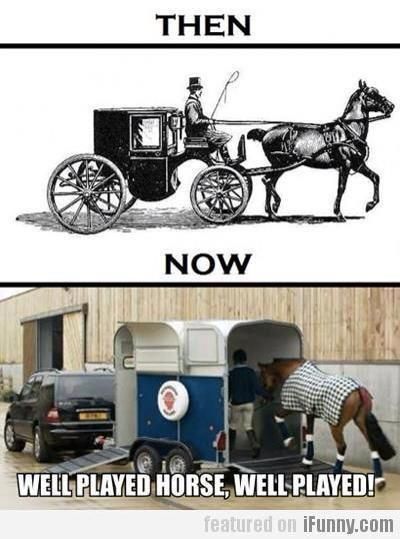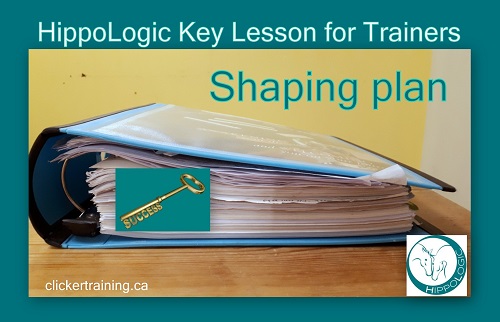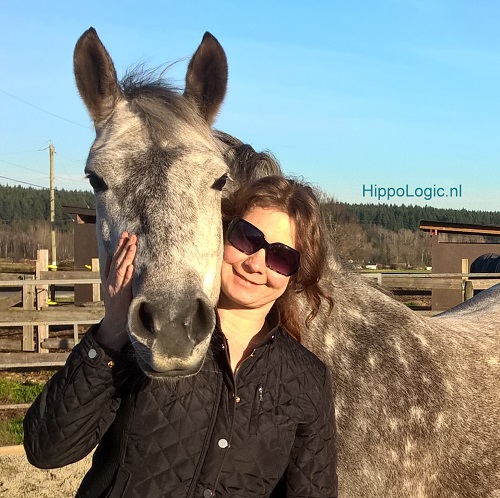In my community I focus not only on teaching horse people to train behaviours with positive reinforcement, I specialized in transforming horse owners into clicker trainers. Most horse people don’t consider themselves ‘clicker trainers’, but I believe you are if you change the behaviour of your horse with positive reinforcement!
What do I mean by that? I focus not only on how to clicker train your horse, I help you develop the trainer skills you must develop, in order to become the best clicker trainer you can be.
Clicker Skills vs Trainer Skills
Clicker skills are the tools, the techniques, the method and your system in order to train your horse..
Trainer skills are the skills that the Trainer must develop in order to learn to think in a positive reinforcement way.
Do you ask yourself:
“How can I solve this with R+? “
“How can I make this (this thing *I* want) a Win-Win, so I get what I want from my horse and my horse gets what he wants so we both feel good about it and it enhances our relationship?”
“How can I prevent falling back on R- (or P+/-)?”
“How can I improve so that I get better results or teach my horse faster and without frustration?”
I’ve thought very long about what it takes to become a really good positive reinforcement trainer and The 6 Key Lessons for Trainers are the skills that helped me and all my clients the most. I call them Key Lessons for Trainers, because they are your Key to Success in Clicker Training. You can train faster, get better, more reliable and predictable(!) results and the better you’re at the key Lessons for Trainers, the less you fall back on traditional training. The less you fall back on R- (because now you have R+ solutions and ways to train), the less guilt and the better your friendship with your horse will be.
The better your positive reinforcement Training Skills, the better your results you’ll get and the better the friendship with your horse will be.
Tweet
Key Lesson #1
Principles of Learning & Motivation. This not only includes knowledge of the Learning Quadrant (R+, R-, P+ and P-), as you’d expect. There is more, like:

- HOW does a horse learn? How does learning takes place?
- How does your horse learns best? What increases learning (a certain level of calmness, curiosity, rewards, experience (let them do the thinking) and so on)
- What inhibits learning and how can you avoid it (too much fear, frustration, flight/fight response, boredom, lack of interest, fear of learning et cetera)
- What motivates my horse in a positive way (appetitives)
And… (this is the part most people skip):
- How do I -as trainer and human- learn best? Do I like learning from video, practising, reading, conversations and discussions with peers. Do I like step-by-step instruction during my training sessions or do I want to have the theory and then practise on my own and have someone to give me feedback for improving and someone I can turn to to get support if I struggle.
- How can I keep myself motivated? Lots of clients approached me because they lost motivation do keep figuring out things on their own and reinventing the wheel. Success is a great motivator: you’re training your horse and BAM! He has learned the behaviour you wanted! Great! Now, how to keep this in his repertoire (see above, how does learning take place and how to keep your horse motivated to perform the behaviour you just trained)?
- How do I keep momentum in my horse’s learning curve? Most reasons that people get stuck in clicker training are easily solved, if they would know how. Find a brain to pick so you won’t have to put your horse and yourself to unnecessary frustration or boredom in training.
Another part of Learning is to take into account the natural behaviour of your goal species, your learner! Horses have different natural behaviour, lifestyle and learning styles than for instance dogs, who are predators. Once you know how to tailor your training to your learners natural behaviour, you can prevent so much struggle!
Unfortunately, most horse people believe in the myths they’ve fed us over the years (“Don’t let your horse win!” “Show him who’s boss” “Make him do it”). That you (still) believe them is not your fault, you assumed that the more experienced horse person/instructor was right… Unfortunately they were dead wrong, if they taught you to use force and coercion to get what you want from your horse.

Taking into account what you’re asking from an animal (horse) that is developed over thousands of years on plains, is a grazer and browser and uses flight and flight and numbers (herd animal) to survive to go into a tiny, wobbly space, where escape is not possible and also often without fellow herd members… No peripheral vision possible in a box with tiny windows!.
Yes I’m talking about trailer loading. It’s very unnatural and goes into a lot of their natural behaviour.
And most people don’t even think about that, when their horse refuses to go in… They label their horse as stubborn, dumb, stupid or worse.
I think it’s amazing that we can überhaupt train a horse to travel in a trailer, given his natural behaviour.

If more people would understand the Principles of Learning & Motivation in a way the LEARNER benefits, too, the world would be a happier place. Wouldn’t you agree?
How do I implement the Principles of Learning & Motivation?
Practise, practise, practise. Also: making mistakes, and learning from them and trying new approaches (thinking from what your horse would like, what he *can* do (what is species specific and easy for him). Another Key Lesson for Trainers is to Track Your Training and Evaluate it! More about that in another blog. 😉 That will help you actually implement Key #1 Principles of Learning & Motivation.
Most difficult thing if you’re changing from P and R- to more R+ in training, is to train yourself to ask yourself questions so you become aware of what you’re doing and what’s happening.
3 Most Important questions in Training:
- Is my horse making an Away-From decision? If so, you’re using an aversive or there could be an aversive in the environment (horse is scared of the trailer, a dog barks and makes your horse fearful)
- Is my horse making a Moving- Towards decision? He doesn’t want to go into the trailer because he rather eats grass (appetitive) or wants to stay with his friends (herd) and that’s the reason he doesn’t trailer load today.
- What motivates my horse to do what he’s doing? (Not only an important question if he doesn’t do what you want, but also a very important question if he does do it! So *you* learn what he wants and can use that next time. If he rather wants to graze the grass next to the trailer instead of going into the trailer, how can you use that information to get what you want? How can you use grass to get him into the trailer? Can you think of ways?

Do more with Clicker Training!
Are you a compassionate horse owner who wants to build a strong friendship with your horse? Would you like to understand your horse better and help your horse to understand YOU better? Get access to high quality online training and a fabulous, supportive R+ community in our HippoLogic Clicker Training Academy. Check out the link!
Want to do more with Clicker Training?
Join the HippoLogic Academy! I coach and support you personally getting your dream results with positive reinforcement, so that you can bond with your horse in the process. Create a connection build on mutual trust and understanding, a clear two-way communication built on love. Click the image to go access the application form ↓

Not sure? Start with a free clicker training assessment to get taste of what it feels like to work with me. When you have a specific struggle that you want to overcome, don’t hesitate to contact me.
In this assessment you’ll discover what’s holding you back from accomplishing the things you want with your horse. After our conversation you’ll know exactly what to do, in order to move forward towards your goals.
Happy Horse training!
Sandra Poppema, B.Sc., founder of HippoLogic & HippoLogic Clicker Training Academy

Join us!











You must be logged in to post a comment.